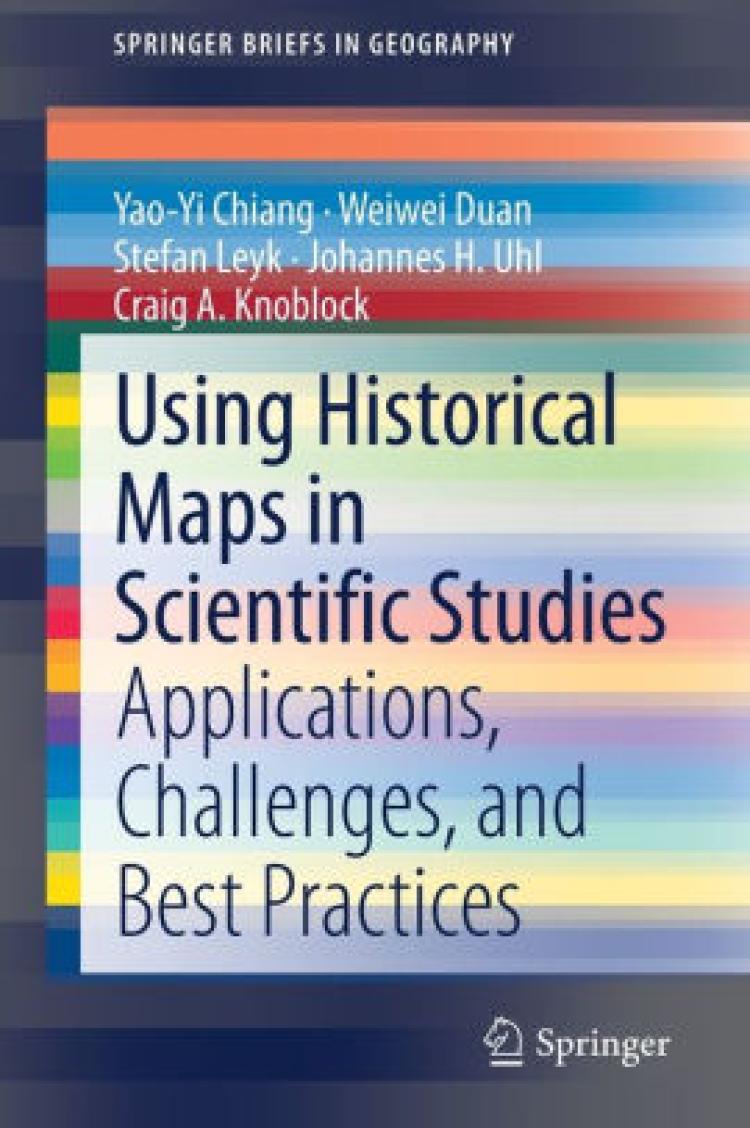Using Historical Maps in Scientific Studies Applications, Challenges, and Best Practices

About the book: This book illustrates the first connection between the map user community and the developers of digital map processing technologies by providing several applications, challenges, and best practices in working with historical maps. After the introduction chapter, in this book, Chapter 2 presents a variety of existing applications of historical maps to demonstrate varying needs for processing historical maps in scientific studies (e.g., thousands of historical maps from a map series vs. a few historical maps from various publishers and with different cartographic styles). Chapter 2 also describes case studies introducing typical types of semi-automatic and automatic digital map processing technologies.
The case studies showcase the strengths and weaknesses of semi-automatic and automatic approaches by testing them in a symbol recognition task on the same scanned map. Chapter 3 presents the technical challenges and trends in building a map processing, modeling, linking, and publishing framework. The framework will enable querying historical map collections as a unified and structured spatiotemporal source in which individual geographic phenomena (extracted from maps) are modeled (described) with semantic descriptions and linked to other data sources (e.g., DBpedia, a structured version of Wikipedia). Chapter 4 dives into the recent advancement in deep learning technologies and their applications on digital map processing. The chapter reviews existing deep learning models for their capabilities on geographic feature extraction from historical maps and compares different types of training strategies. A comprehensive experiment is described to compare different models and their performance.
Historical maps are fascinating to look at and contain valuable retrospective place information difficult to find elsewhere. However, the full potential of historical maps has not been realized because the users of scanned historical maps and the developers of digital map processing technologies are from a wide range of disciplines and often work in silos. Each chapter in this book can be read individually, but the order of chapters in this book helps the reader to first understand the “product requirements” of a successful digital map processing system, then review the existing challenges and technologies, and finally follow the more recent trend of deep learning applications for processing historical maps.
The primary audience for this book includes scientists and researchers whose work requires long-term historical geographic data as well as librarians. The secondary audience includes anyone who loves maps!
About the author: Stefan Leyk is an Associate Professor at the Department of Geography, University of Colorado Boulder and a Research Fellow at the Institute of Behavioral Science. He is a Geographical Information Scientist with research interests in information extraction, spatio-temporal modeling and socio-environmental systems. In his work he uses various sources of historical spatial data to better understand the evolution of human systems and how the built environment interacts with environmental processes in the context of land use and natural hazards.
Johannes H. Uhl is a PhD candidate at the Department of Geography, University of Colorado, Boulder, USA. He received his MS degree in Geomatics, Geodesy, and Cartography from Karlsruhe University of Applied Sciences, Germany, and from Polytechnic University of Valencia, Spain, in 2011. His current research interests include spatiotemporal information extraction and data modeling, uncertainty analysis, geospatial data integration, and machine learning. He uses a variety of spatial-temporal datasets, such as remote sensing data and derived data products, historical topographic maps, or large real-estate related databases

